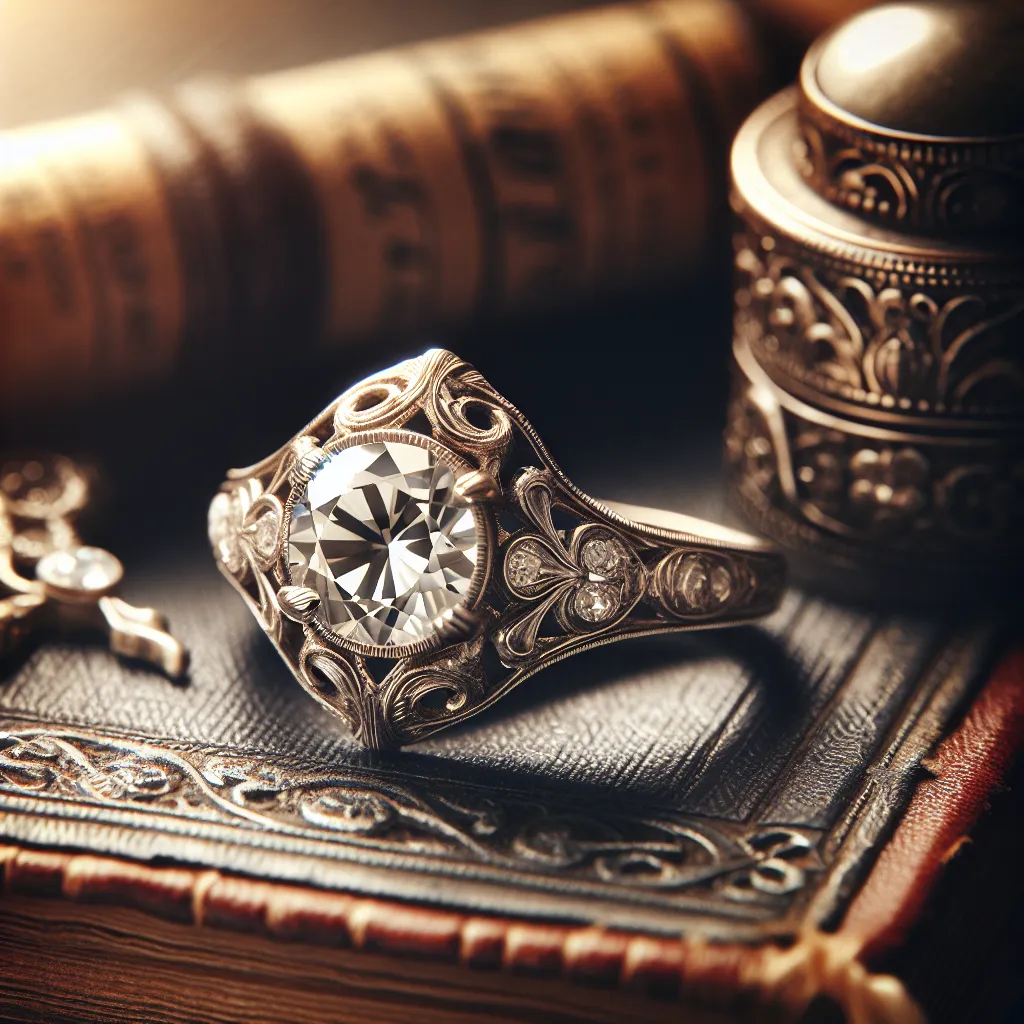The Importance of Rings in Ancient Egyptian Culture
In ancient Egyptian culture, rings held significant symbolic importance and were not only worn as jewelry, but also carried deep cultural and religious significance. The circle, with no beginning or end, was a powerful symbol of eternity and the eternal cycle of life, death, and rebirth, making the ring a fitting representation of these beliefs.
One of the most iconic rings in ancient Egypt was the scarab ring, featuring the image of the sacred scarab beetle. The scarab was associated with the sun god Ra and was a symbol of regeneration and transformation. Wearing a scarab ring signified protection, good luck, and the journey through the afterlife. It was common for these rings to be placed on the fingers of the deceased before burial, emphasizing their role in the transition to the next life.
Furthermore, rings were also used as official seals, serving a practical purpose in addition to their symbolic significance. Signet rings with intricate carvings or engravings were used to stamp documents and clay seals, signifying authority and authenticity. This dual role of rings as both symbols of spiritual beliefs and practical tools reflects the multifaceted significance they held in ancient Egyptian society.
The use of specific materials and gemstones in these rings also carried symbolic weight. Precious metals such as gold were associated with the sun and were believed to have protective qualities. Gemstones like lapis lazuli, carnelian, and turquoise were chosen for their symbolic meanings, representing aspects such as protection, vitality, and the heavens.
In conclusion, rings in ancient Egyptian culture were not merely decorative accessories but served as potent symbols of spirituality, eternity, and authority. Their intricate designs, materials, and the cultural practices surrounding them provide profound insight into the rich tapestry of beliefs and customs in ancient Egypt.
Ritual Significance of Rings in Hindu Traditions
In Hindu traditions, the significance of rings is deeply rooted in the ritual practices and cultural symbolism. The ring, known as “Bichiya” or “Toe Ring,” holds a special place in Hindu weddings and married women’s lives. It is not just a piece of jewelry but a symbol of marital status and a significant aspect of a married woman’s identity. The toe ring is worn on the second toe of both feet and is usually made of silver, representing purity and prosperity.
During the traditional Hindu wedding ceremony, the groom adorns the bride’s feet with the toe ring, signifying the beginning of their marital journey. The toe ring is believed to exert pressure on certain nerves that connect to the reproductive organs, symbolizing the marital bond and ensuring the well-being of the husband. Furthermore, the toe ring is also considered auspicious and is seen as a form of respect for the marital institution.
Additionally, the significance of rings in Hindu culture extends beyond the matrimonial context. Rings adorned with specific gemstones are also believed to have astrological and spiritual significance, influencing one’s life and destiny based on the position of celestial bodies. For example, wearing a ring set with a particular gemstone, such as a ruby or emerald, is thought to bring good fortune and protect the individual from malefic planetary influences.
In conclusion, rings in Hindu traditions carry profound ritual significance, symbolizing marital commitment, auspiciousness, and spiritual beliefs. Their presence in various ceremonies and daily life underscores their importance as more than mere adornments, representing deep-rooted cultural values and customs.
Symbolic Meanings of Rings in Celtic Mythology
Rings have held a special symbolism in various cultures throughout history, with each culture attributing different meanings to this timeless piece of jewelry. In Celtic mythology, the symbolism of rings is deeply intertwined with the concepts of eternity, loyalty, and connection. The circular shape of the ring, with no beginning or end, represents the idea of never-ending cycles and the eternal nature of life, love, and the universe in Celtic belief.
Furthermore, rings in Celtic culture are often associated with themes of loyalty and connection. The exchange of rings was a common practice in Celtic marriage ceremonies, symbolizing the eternal bond and commitment between the couple. Additionally, Celtic knots, often featured in Celtic ring designs, are symbolic of interconnectedness and the timeless nature of the human spirit.
In Celtic mythology, rings were also believed to hold protective powers, with intricate designs and symbols engraved on the rings to ward off evil spirits and bring good fortune to the wearer. These symbolic meanings of rings in Celtic mythology continue to resonate in modern times, with many individuals choosing Celtic-inspired rings to honor the timeless themes of eternal love, loyalty, and spiritual interconnectedness.
Understanding the symbolic meanings of rings in Celtic mythology provides insight into the profound significance of this piece of jewelry in Celtic culture and the enduring relevance of its symbolism in today’s society.
The Significance of Wedding Rings in Modern Western Culture
In modern Western culture, wedding rings hold significant symbolism, representing love, commitment, and unity between partners. The circular shape of the ring is often interpreted as a symbol of eternity, with no beginning or end, mirroring the everlasting nature of the marital bond. The use of precious metals, such as gold or platinum, signifies the value and preciousness of the relationship, while the tradition of wearing the ring on the fourth finger of the left hand is believed to have originated from the ancient belief that a vein in that finger leads directly to the heart.
Furthermore, the act of exchanging rings during a wedding ceremony serves as a public declaration of the couple’s commitment to each other, witnessed and acknowledged by their loved ones. In this context, the wedding ring becomes a tangible representation of the vows and promises made between partners, serving as a constant reminder of their enduring love and fidelity.
Moreover, the custom of wearing a wedding ring has evolved to incorporate personal touches, such as engraving initials or significant dates, further emphasizing the unique connection between the individuals involved. Additionally, the practice of adding a diamond to the design has become widespread, symbolizing not only the strength and resilience of the relationship but also the beauty and uniqueness of the bond.
Overall, the significance of wedding rings in modern Western culture encompasses emotional, symbolic, and social elements, reflecting the enduring importance placed on love, commitment, and partnership in today’s society.



